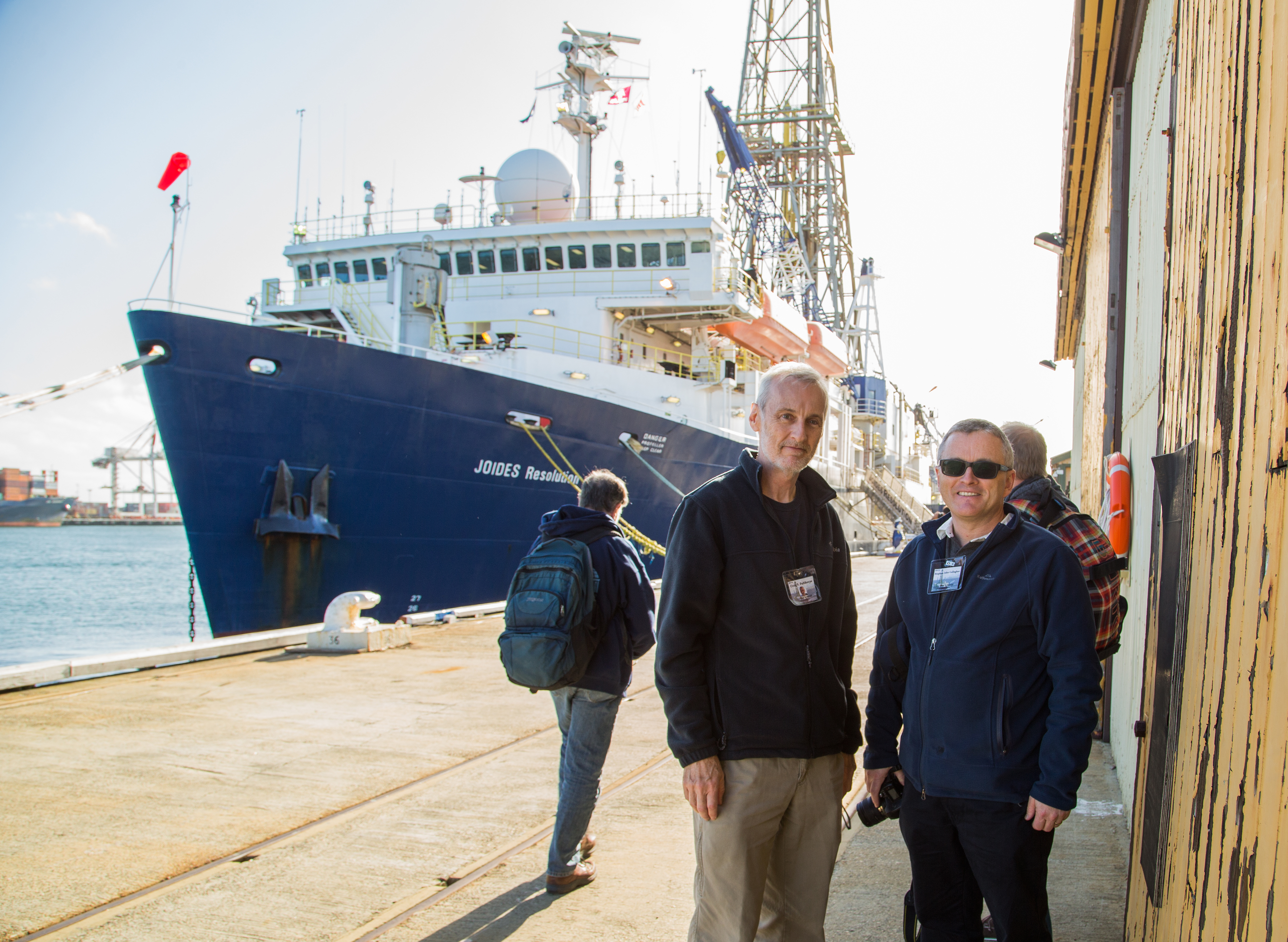
Craig Fulthorpe, senior research scientist at the University of Texas Institute for Geophysics, recently served as co-chief scientist of International Ocean Discovery Program (IODP) expedition 356. The expedition was a collaboration of more than 30 scientists and 20 support staffers who came together off the coast of Western Australia on the Joides Resolution in the sake of science.
Fulthorpe sent this update at the end of August, midway through the trip:
The goal of Expedition 356 is to complete a latitudinal transect (10 degrees of latitude) of drillsites along the western margin of Australia in order to study the impact of the Indonesian Throughflow from the Pacific to the Indian ocean. The throughflow has influenced the origin and intensity of the Leeuwin Current, the increasing aridity of Australia, evolution of the Australian Monsoon and the regional development of reefs.
We left Fremantle on August 3rd and have just completed drilling at our third and deepest (1090 m) site. This site is on the Australian Northwest Shelf, whereas the first two were farther south in the Perth Basin. There are major gas fields in this area and there are production platforms on the horizon. We’re about to start logging the hole.
Our very first site, which I don’t even count it as one of the three we’ve drilled, was very discouraging. Carbonate rubble and early cementation at the seafloor prevented us from even getting started. However, we moved to an alternate site that was more accommodating and, since then, things have improved greatly. Core recovery in these carbonate sediments has been excellent with the Advanced Piston Corer (APC), especially the half-length APC, which has allowed is to extend APC coring to 440 m. We’ve also been favored by good weather so far. That’s important because all of the sites are in shallow water (as little as 100 m at our next site) and there are strict limitations on allowable heave. Total core recovery so far is over 2.5 km.
In addition to positive coring results we’ve been treated to numerous, occasionally spectacular, humpback whale sightings. We’re in the path of their annual southward migration. That doesn’t bode well, however, for planned VSPs, because of restrictions on air gun use when marine mammals are present.
We have three more sites to drill before we arrive in Darwin on 30 September, which still seems a long way off. We hope for continuing good conditions for coring, although memories of our very first site show that we can’t take those for granted. Still, we’ve already come a long way toward achieving the planned objectives.
https://instagram.com/p/86T0mHLyet
https://instagram.com/p/8CAFDJryWm
